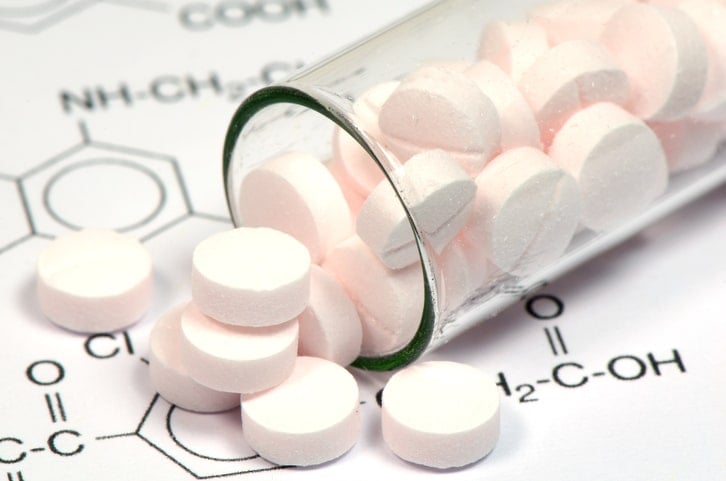
As science and medicine progresses, the research community has had an incredible effect on life expectancy and I’ve looked at seven of the greatest discoveries to impact human health.
ALS/MND breakthroughs
Year discovered: 2016 and 2017
Remember the ALS Ice Bucket Challenge that flooded social media back in 2014? The impact was huge:
- People shared more than 1.2 million Ice Bucket Challenge videos on Facebook
- It received more than 2.2 million mentions on Twitter
- Wikipedia’s ALS page grew from an average of 160,000 views per month to 2.89 million in August 2014
- Celebrities, politicians and sportspeople participated
What seemed like a bit of fun actually ended up raising a whole lot of funds, too: $100 million was raised for the United States’ ALS Association, while millions more was raised for other ALS-related charities from around the world.
2016 discovery
Just like any other viral story, momentum dropped off. However, we were reminded again of the challenge in 2016, when it was revealed that thanks in part to critical funding, scientists had discovered the gene NEK1, one of the most common genes that contributes to the disease.
2017 breakthrough
Just this year, it was announced that the Food and Drug Administration (FDA) had approved a new drug to treat ALS, bringing the total number of drugs suitable for treatment to two.
This new treatment, called Radicava, was the first approved treatment in 22 years – a tremendous breakthrough for this crippling disease.
A clinical trial took place in Japan and South Korea. Subjects who received Radicava experienced a “33 per cent reduction in the decline of their physical abilities” compared to subjects who received a placebo.
Penicillin
Year discovered: 1928
Antibiotics are used to treat bacterial infections by inhibiting the growth of bacteria, and have been developed over time to treat a number of diseases.
Penicillin is perhaps one of the best-known antibiotics.
The discovery of antibiotics was an accident, when Professor Alexander Fleming, while cleaning his laboratory, discovered a dish of bacteria. On the dish was a ring of mould, and the immediate surrounds of that ring were free from bacteria.
He concluded that this penicillium mould had prevented the growth of the staphylococci.
It wasn’t until years later that penicillin was first isolated.
Trevor Stone, DSc, head of pharmacology at the University of Glasgow, says that without penicillin, “75 per cent of the people now alive would not be alive because their parents and grandparents would have succumbed to infections.” He calls the effects of penicillin “mind-boggling”.
Insulin
Year discovered: 1982
It is estimated 10-15 percent of the sufferers of diabetes are insulin-dependent. It occurs in children and adults up to the age of about 40 but unfortunately there is an increasing number of children under five diagnosed.
It is caused by a person’s immune system attacking the insulin-producing cells in the pancreas which means glucose levels rise.
Treatment with synthetic and animal insulin injections is required for survival as there is not yet a cure. Without this discovery, millions would have died.
Oral-based birth control pills
Year discovered: 1950; approved by FDA in 1960
Thanks to birth control, 100 million women all over the world can control their bodies by supressing ovulation.
When taken correctly, the pill can be 99.9% effective, making it one of the most effective types of birth control methods.
While the pill wasn’t discovered until the 50s, Austrian scientist Ludwig Haberlandt carried out a variety of experiments testing hormone manipulation in the 1920s.
In addition to birth control, the pill can also help manage some types of medical conditions, including:
- Polycystic ovaries
- Endometriosis
- Acne
- Severe menstrual cramps
Polio vaccine
Year discovered: 1953
There are two vaccines that have successfully treated polio.
Astonishingly, these vaccinations have whittled the number of cases each year from 350,000 in 1988 to just 37 in 2016.
Children aged under five are most at risk of developing polio, but the polio vaccine can protect a child for life.
The end of polio is nigh, according to the Polio Eradication and Endgame Strategic Plan: polio may be eradicated by 2018!
Smallpox vaccine
Year discovered: 1796
Thanks to an astounding vaccination program led by the World Health Organisation (WHO), smallpox was eradicated. The last known case of smallpox was in 1977 in Somalia.
It has been estimated anywhere up to 500 million deaths were caused by smallpox with and even in the 18th century, every 10th child born in Sweden and France died from smallpox.
Small quantities of smallpox exist for medical purposes in research labs in Atlanta, Georgia and Russia.
Aspirin
Year discovered: 1897; distributed in 1899
Aspirin has been providing pain and headache relief for more than 100 years.
Aspirin treats pain, fever, inflammation and prevents heart attacks. It’s also used during treatment for those who have suffered heart attacks.
Once sold as powder, aspirin tablets were first made in 1915.
Can aspirin lower the risk of cancer?
Yes, according to some studies. It found that regularly taking aspirin could lower the risks of certain types of cancer, including:
- Gastrointestinal
- Oesophageal
- Lung
- Pancreatic
- Prostate
- Hereditary bowel


